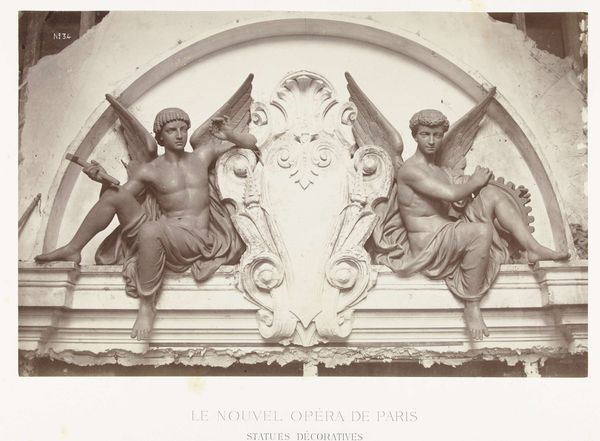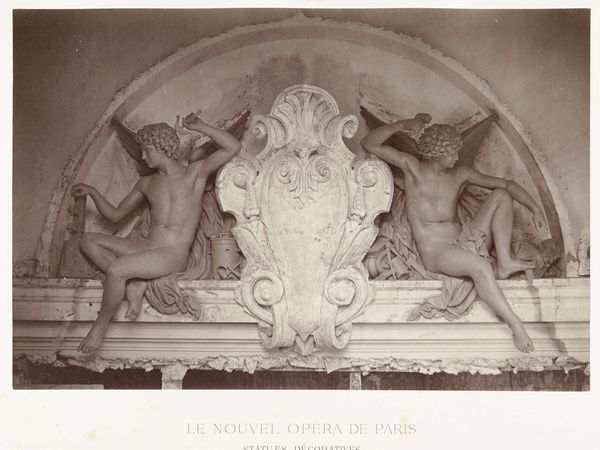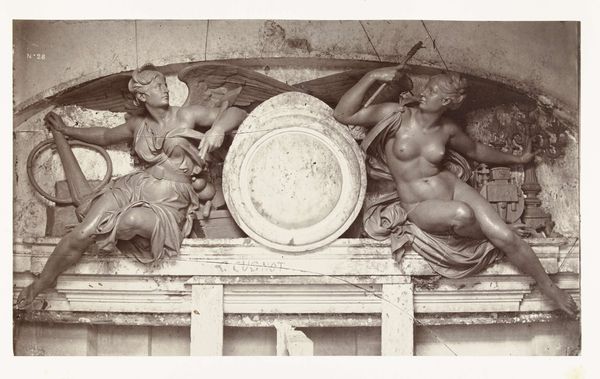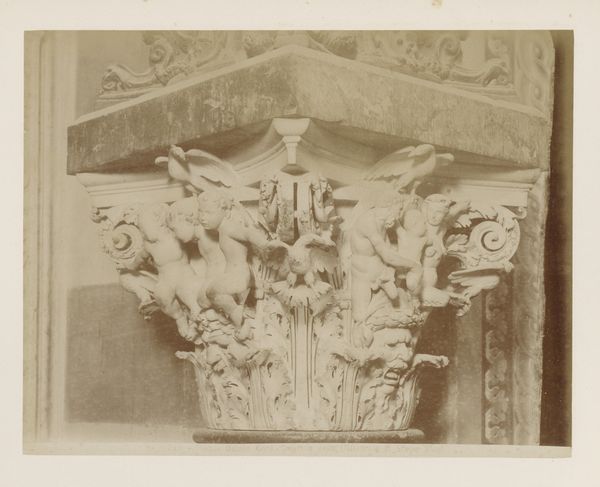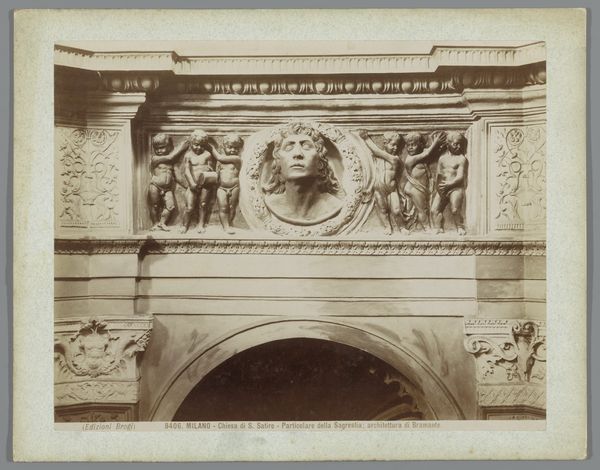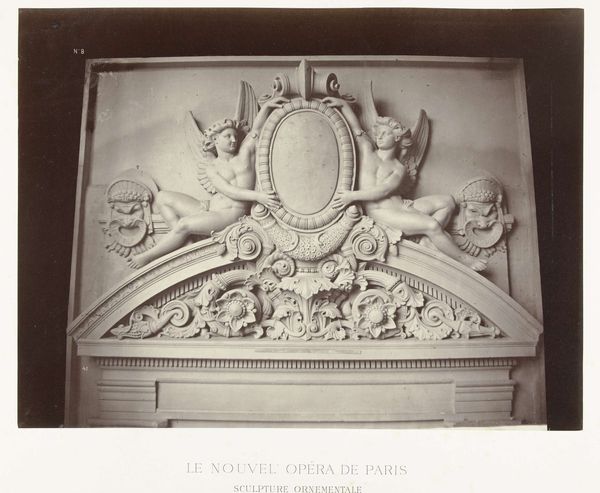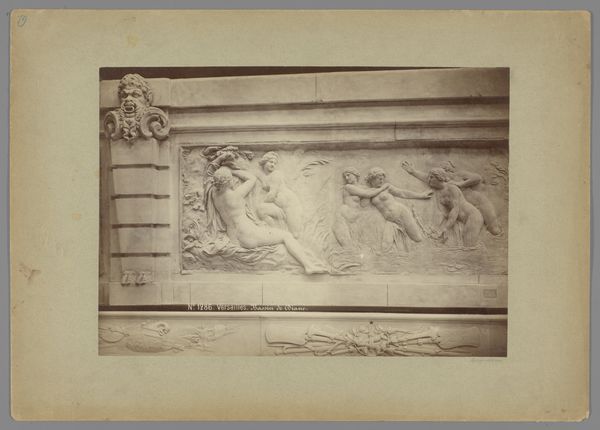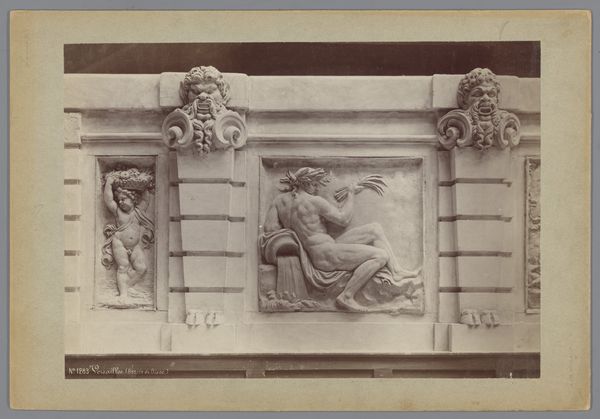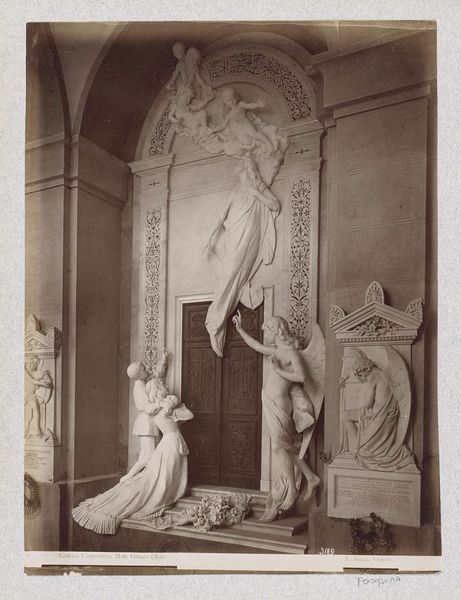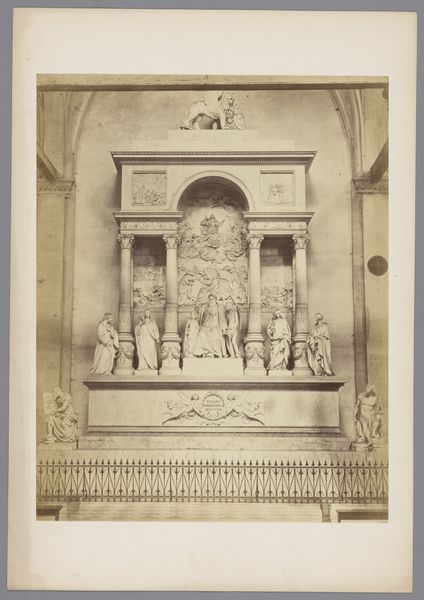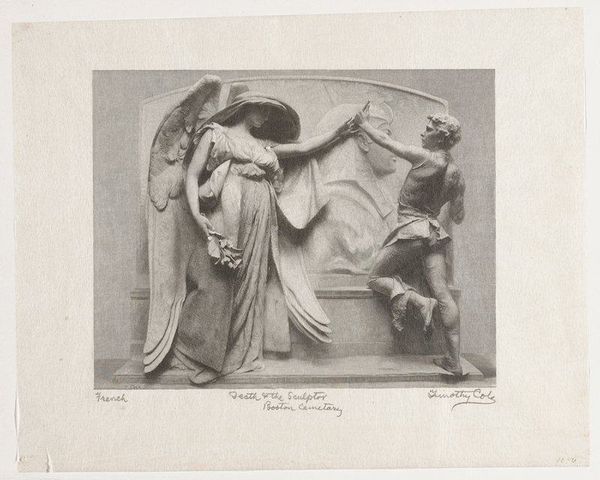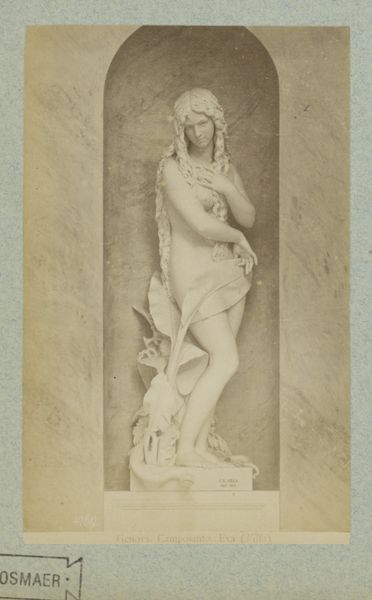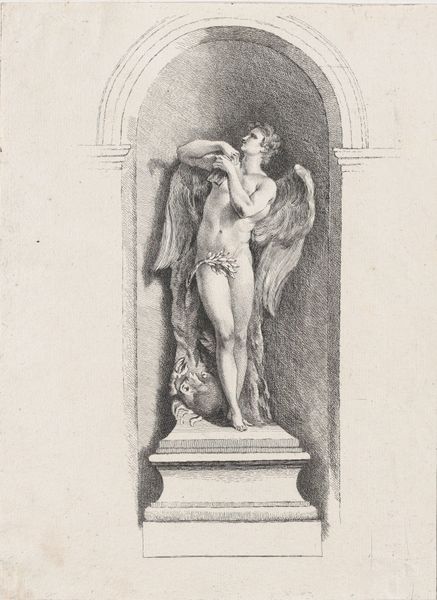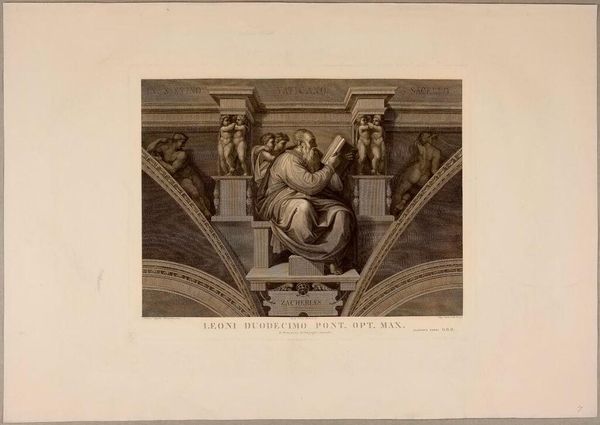
Twee beelden van vrouwelijk engelen met muziekinstrumenten in de hand, zittend aan weerszijden van een medaillon, gesitueerd boven een deurpartij. c. 1878 - 1881
0:00
0:00
Dimensions: height 250 mm, width 373 mm, height 620 mm, width 438 mm
Copyright: Rijks Museum: Open Domain
Curator: This photographic print by Louis-Emile Durandelle captures decorative statues made circa 1878-1881 for the New Paris Opera. The inscription at the bottom actually declares “Le Nouvel Opéra de Paris: Statues Décoratives”. Editor: Wow, the immediate sense I get is one of ornate tranquility. Two angelic figures, so poised, almost languid. They look as if they might start playing a quiet duet at any moment. There’s a lovely dreaminess about it all, like stepping into an old memory. Curator: It is interesting to consider that Durandelle’s photography served not only to document but also to participate in the spectacle and promotion surrounding the new opera house. Photography in this context moves beyond mere reproduction to a form of cultural production in itself, contributing to the mythos of the opera house as a symbol of Parisian grandeur. Editor: You know, it’s not just the technical skill or the grand scale that captivates. It’s the light, almost ethereal, highlighting the curvature of their sculpted bodies. You sense both strength and vulnerability. Perhaps like the opera itself? Such drama… Curator: It highlights the material paradox. These were likely stone carvings which required significant manpower for their construction. The photographic medium here has served to flatten them and distribute the work as if the act of carving were effortless. Note too that these carvings were designed to decorate door frames, placing the artisanal labor subordinate to the overarching architectural structure. Editor: Exactly. There's a narrative in that play of shadows and light that the lens has managed to draw out. It brings us so intimately close to these works. The cold stone of the carving against such warmth, if that makes any sense? Maybe it doesn't... Curator: I think that it's not so strange if you reflect upon photography’s capabilities of rendering something material ephemeral. This historical photograph grants us access to 19th-century sculpture and architecture which might be absent, decayed, or inaccessible today. Editor: Yes! So well put. It does. Curator: It also opens some complex issues of labor, capital, and aesthetics in the artistic sphere. Editor: Absolutely. What started out seeming dreamy led us into all these hidden nooks and crannies. Intriguing.
Comments
No comments
Be the first to comment and join the conversation on the ultimate creative platform.
